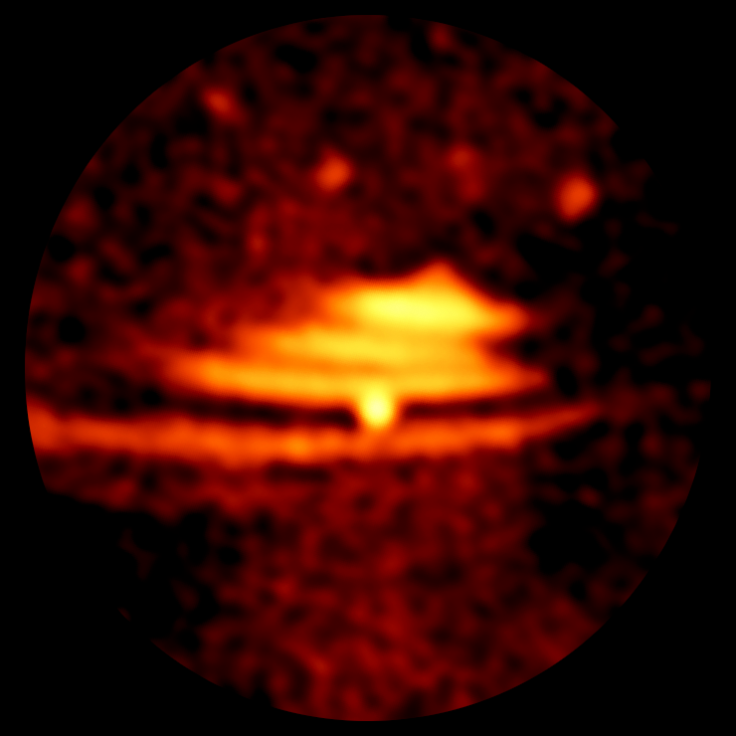Christmas is almost knocking at the door and there is undoubtedly a festive mood among people. As the festive preparations are on in full swing, new research claims that some mysterious Christmas tree-shaped objects have been spotted in space.
Researchers at the Leibniz Institute for Astrophysics in Potsdam (AIP) and the Max Planck Institute for Astrophysics in Garching (MPA) have investigated galactic radio objects that adopt strange shapes such as Christmas trees and harps. They believe that these peculiarly shaped objects may help them to understand the propagation of cosmic radiation.
Timon Thomas, one of the researchers from AIP, said, "Astronomers have been observing planar radio-emitting magnetised structures in the galactic centre for almost twenty years. Recent observations with the MeerKAT telescope in South Africa show that these are organised into groups of almost parallel filaments, that span over a length of several light years."
"The filaments are seemingly sorted by their length, so that they look like the strings of a harp," Thomas, who is also the lead author of the study, said.
Radio synchrotron harps

According to the study, the team of astrophysicists from Potsdam and Garching have named these objects as radio synchrotron harps. The mechanism that generates radio emission is called 'synchrotron' and it appears when charged particles such as electrons are accelerated in magnetic fields.
Christoph Pfrommer, a researcher from AIP and the co-author of the study, said, "The observed structures are created when massive stars or pulsars fly through an ordered magnetic field and discharge cosmic ray particles along their path into these magnetic fields. The particles propagate along the magnetic field lines, usually transverse to the stellar orbit, causing the magnetic fields in the radio regime to light up and appear like the strings of a harp."
The exact transport process of the particles along their paths was a mystery, but the researchers presume that the individual strings show a chronological sequence in which the particles have spread along the magnetic field lines from their point of release.
Transport of cosmic ray particles
The researchers said that the objects which are spotted in the radio observations should have rounded bell shapes if the propagation was a diffusion process. But, here those are tree-shaped and harp-shaped that shows that the previous assumption of diffusing particles is not right.
The astrophysicists measured one of the harps and made detailed model calculations and claimed that the streaming must be the most important transport process of cosmic rays. "The particles 'pluck' the strings and stimulate the magnetic fields to oscillate, which in turn hold the particles together to form a streaming fluid," said Torsten Enßlin, a researcher from the MPA, who is also the initiator of this study.
Thus, the scientists solved the decade-old mystery of the transport of cosmic ray particles with the help of this illuminating Advent insight.









